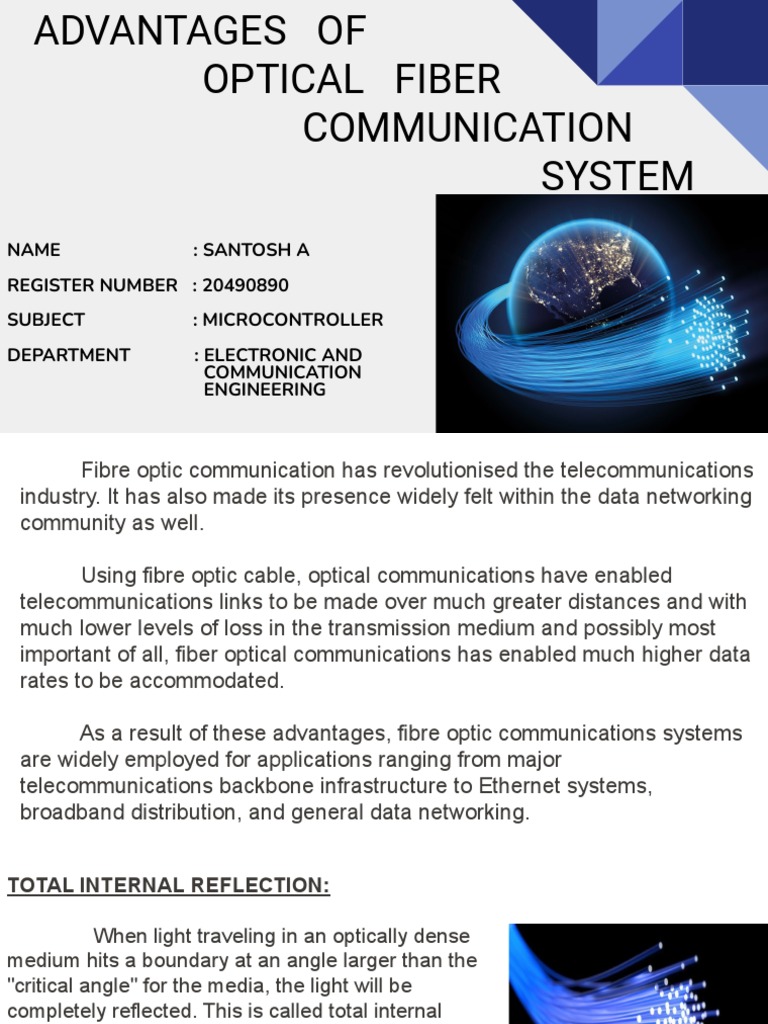In the ever-evolving landscape of technology and communication, few innovations have catalyzed transformation as profoundly as optical fibers. These slender strands of glass or plastic are akin to the veins of modern society, pulsing with streams of data that traverse vast distances at the speed of light. Their applications span multiple domains, offering advantages that range from enhanced durability to heightened bandwidth capacity. This exploration delves into the major applications of optical fibers, illuminating their significance with metaphorical richness and depth.
1. Telecommunications: The Digital Conduit
At the heart of modern telecommunications lies optical fiber technology. Imagine the internet as a vibrant marketplace, bustling with commerce and information exchange. Optical fibers serve as the grand boulevards in this digital metropolis, allowing for uninterrupted communication. Their ability to transmit vast amounts of data through modulation of light makes them superior to traditional copper wires. This capacity encompasses every facet of our digital lives, from phone calls to streaming services, ushering in an era where bandwidth is abundant and connectivity is seamless.
Moreover, fiber optics facilitate long-distance communication with negligible signal degradation. This phenomenon, often referred to as the ‘lightwave transmission’ principle, ensures that the integrity of data remains intact across miles. As communities become increasingly interconnected, the reliance on fiber optics in telecommunications becomes not just advantageous but essential.
2. Medical Applications: Illuminating Health Sciences
Beyond their role in technology, optical fibers shine brightly in the field of medicine. Visualize the human body as a complex maze, where precision and clarity are quintessential for navigation. Optical fibers function as guiding lights, allowing surgeons to penetrate this intricate labyrinth with minimal invasiveness. Fiber-optic endoscopy is a prime example; these instruments equipped with optical fibers provide real-time imaging of internal organs, reducing the need for exploratory surgery. By illuminating dark recesses, they empower physicians to diagnose and treat with unprecedented accuracy.
Additionally, optical fibers are pivotal in phototherapy, a revolutionary treatment modality for various ailments. Utilizing specific wavelengths of light, these fibers can target cells, promoting healing without invasive procedures. Thus, in the hallowed halls of hospitals, optical fibers embody both a beacon of hope and a testament to technological progress.
3. Industrial Applications: Robustness in Harsh Environments
Industrially, optical fibers are deployed in environments that would traditionally spell doom for conventional wiring. Picture an arduous expedition in treacherous terrains—optical fibers are the stalwart companions that endure extreme conditions, be it temperature fluctuations, corrosive environments, or electromagnetic interference. Their resilience manifests in diverse applications, from monitoring structural integrity in bridges to providing real-time data in manufacturing processes.
Embedded in machinery, these fibers facilitate data transmission that is both reliable and efficient, contributing to the emergence of smart factories. In such settings, optical fibers serve as the veins of operational systems, ensuring that information flows uninterruptedly, thus optimizing productivity and enhancing safety.
4. Networking and Data Centers: The Backbone of Global Connectivity
The exponential growth of digital content necessitates an infrastructure that can withstand immense data volumes. In this context, optical fibers emerge as the backbone of data centers, where servers communicate fervently, much like neurons in a brain. Utilizing dense wave division multiplexing (DWDM), a technique that allows multiple signals to traverse a single fiber, network operators can vastly expand their data-carrying capacity.
This remarkable technology enables the construction of extensive networks that can deliver high-speed internet across continents. As the demand for data surges, optical fibers remain a cornerstone in scaling up infrastructure, ensuring that our digital experiences remain unhindered by latency and congestion.
5. Security and Defense: A Veil of Light
The realm of security and defense has also been transformed by optical fiber technology. Envision a clandestine operation where every whisper can be intercepted—optical fibers provide immunity against eavesdropping, as data transmitted through these channels is encapsulated in light, rendering it nearly impossible for agents to decipher without sophisticated tools. This unique characteristic underpins secure communications, safeguarding sensitive information from prying eyes.
Furthermore, optical fibers are employed in various surveillance and monitoring systems, providing real-time data feeds that bolster national security initiatives. Their ability to operate discreetly and efficiently makes them indispensable in counter-terrorism and military engagements, establishing a secure line of communication where it is most crucial.
6. Emerging Technologies: The Future Beckons
The horizon of optical fiber applications is not static; rather, it is continuously expanding with advancements in technology. Innovations such as quantum communication and fiber-optic sensors promise to revolutionize various fields, from secure communications to environmental monitoring. Imagine a world where the very fabric of reality is woven with the threads of light, enhancing our understanding of both micro and macro phenomena.
As researchers delve into the realm of photonics and quantum entanglement, the potential for optical fibers to enable groundbreaking discoveries is vast. This foresight implies a future rich with possibilities, where the applications of optical fibers will only intensify, further entwining them with the fabric of our daily lives.
In conclusion, optical fibers serve not merely as conduits of information but as transformative agents in our world. Their applications traverse telecommunications, healthcare, industry, security, and beyond, casting a luminous glow on the future of communication and technology. As society continues to innovate and adapt, the role of optical fibers will undoubtedly expand, illuminating pathways previously unimagined.










